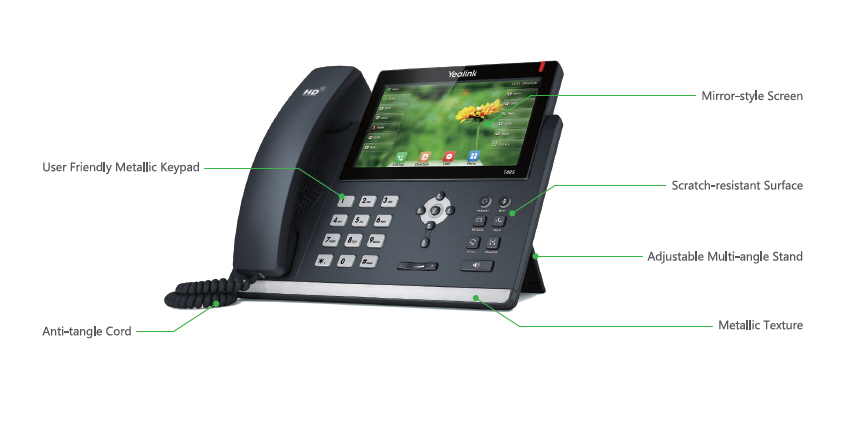Introduction
In today’s hyper-connected world, effective communication is more critical than ever. Businesses are increasingly turning towards Voice over Internet Protocol (VoIP) phone systems to enhance their communication capabilities. One of the cornerstones of a successful VoIP implementation is Session Initiation Protocol (SIP) trunking. This technology allows businesses to connect their existing phone systems to the internet, enabling advanced calling features and significant cost savings. In this article, we will explore the key features of SIP trunking and how they can optimize your VoIP phone experience.
Understanding SIP Trunking
What is SIP Trunking?
SIP trunking refers to a method of sending voice and other unified communications services over the internet through an IP-based connection. Instead of traditional phone lines, SIP trunks use your broadband connection. This technology is pivotal for organizations looking to modernize their telecommunication infrastructure without incurring substantial costs.
How Does SIP Trunking Work?
At its core, SIP trunking operates by utilizing the Session Initiation Protocol to manage voice calls and multimedia sessions over an IP network. When you make a call using a VoIP phone system, the SIP trunk manages the signaling and setup of the call, while also handling the data transmission.
Components of SIP Trunking
SIP Provider: The service provider that supplies the SIP trunks. PBX: The Private Branch Exchange that routes calls within your organization. Internet Connection: A robust broadband connection essential for reliable communication.Key Features of SIP Trunking
Cost Efficiency
One of the most compelling reasons businesses opt for SIP trunking is cost efficiency. Traditional phone lines incur various charges like long-distance fees, but with SIP trunks, these costs are significantly reduced or eliminated altogether.
How Can You Save Money with SIP Trunks?
- No need for multiple physical lines. Lower international calling rates. Reduced maintenance costs on hardware.
Scalability and Flexibility
A significant advantage of using a VoIP phone system integrated with SIP trunking is scalability. Businesses can quickly scale up or down based on their needs without incurring additional infrastructure costs.
Planning for Growth
- Easily add new lines as your business expands. Adjust your plan based on seasonal demands without hassle.
Enhanced Features
SIP trunking unlocks a suite of enhanced features that traditional systems may not offer:
Video Conferencing: Seamlessly integrate video capabilities into your calls. Unified Messaging: Manage voice mails, emails, and faxes from one platform. Call Forwarding & Routing: Intelligent call management features that improve customer service.High Availability and Reliability
With proper configuration, SIP trunks can provide high availability due to redundancy options in routing paths.
Ensuring Business Continuity
- Implement failover solutions to maintain communication during outages. Utilize multiple internet connections for seamless operation.
Optimizing Your VoIP Phone System with SIP Trunks
Choosing the Right Provider
Selecting an appropriate SIP provider is paramount for optimizing your VoIP experience. Look for providers that offer features tailored to meet your business needs.
Key Considerations When Choosing a Provider
- Pricing structure (pay-as-you-go vs flat rate). Customer support availability. Quality of Service (QoS) guarantees.
Integrating with Existing Infrastructure
Your current PBX or VoIP phone system should be compatible with your chosen SIP trunk solution to ensure smooth operation.
Steps for Integration
Assess compatibility with existing hardware/software. Conduct thorough testing before full deployment.Monitoring Call Quality and Performance
Regularly monitor call quality using tools provided by your SIP provider or third-party solutions to ensure optimal performance.


Key Metrics to Track
- Latency Jitter Packet Loss
Security Measures for Your VoIP Phone System
Importance of Securing Your VoIP System
As organizations adopt VoIP technologies like SIP trunking, they become susceptible to various security threats such as eavesdropping and denial-of-service attacks.
Best Practices for Securing Your Network
Use encryption protocols like SRTP (Secure Real-time Transport Protocol). Regularly update firmware on VoIP devices. Implement strong passwords and multi-factor authentication methods.Troubleshooting Common Issues with SIP Trunking
Identifying Common Problems in Your Setup
While many enjoy smooth sailing with their VoIP systems after implementing SIP trunks, some may face challenges that require troubleshooting expertise.
Common Issues Include:
Poor call quality Inconsistent connectivity Configuration errorsStep-by-Step Troubleshooting Guide
Check bandwidth usage during peak hours. Review settings in your PBX system. Consult logs from both PBX and ISP for error messages.Future Trends in SIP Trunking Technology
Emerging Technologies Impacting SIP Trunks
The landscape of telecommunications continues evolving with emerging technologies like Artificial Intelligence (AI) and Machine Learning (ML).
Potential Advancements Include:
Predictive analytics for managing call volumes effectively. Automated customer service interactions via AI-driven chatbots integrated into sip calling systems.FAQs About SIP Trunking and VoIP Phone Systems
What Is a VoIP Phone System?
A VoIP phone system utilizes internet technology rather than traditional telephone lines to facilitate voice communication, allowing users greater flexibility and advanced features often unavailable in legacy systems.
How Do I Choose Between Hosted vs On-Premises Solutions?
Choosing between hosted versus on-premises solutions depends largely on your business needs; hosted solutions provide ease-of-management but require reliable internet access while on-premises solutions grant control but involve higher maintenance costs.
Can I Use My Existing Phones with a New VoIP System?
Yes! Many existing phones can be adapted or configured to work seamlessly with modern VoIP systems through adapters or software updates.
What Are Some Benefits Unique To Using SIP Trunks?
Some benefits include significant cost savings compared to traditional services along with rich feature sets available through cloud integrations such as video conferencing options.
Is It Easy To Scale Up My Current Setup If Needed?
Absolutely! One major advantage offered https://soundcurve.com/voip-phone-service-walnut-ca/ by SIP trunk technology lies within its scalability which allows businesses quick adjustments based upon changing demands without hassle.

Will My Calls Be Secure Over The Internet?
While there are inherent risks involved in any online activity proper security measures including encryption protocols help minimize potential vulnerabilities ensuring secure communications throughout all transactions performed via this medium.
Conclusion
In summary, adopting S IP trunking offers transformative potential for businesses seeking efficient communications through modernized networks supporting unified communications experiences via advanced functionalities associated specifically designed around today's market's requirements . By implementing best practices such as selecting reliable providers alongside maintaining robust security protocols , organizations can optimize not only operational efficiencies but also overall productivity levels resulting ultimately leading towards elevated customer satisfaction metrics overall! Embracing these changes now could pave pathways toward success while preparing companies adequately against future challenges ahead too .